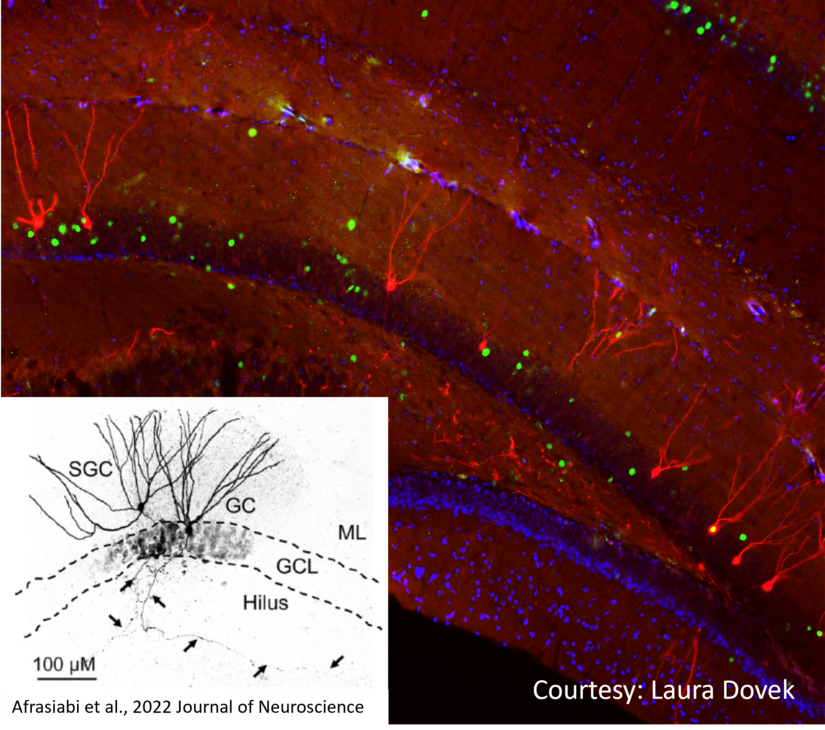Program Overview
Maximum Number of Students: 1
Where: In-person on campus.
Student Level: No preference
Coursework Requirements: No
Description: The Santhakumar focuses on understanding circuit function of the hippocampal dentate gyrus and identifying processes contributing to neurological deficits after brain injury and epilepsy. Brain injury and epilepsy lead to neuronal loss and network reorganization which alter dentate function and lead to epilepsy and memory disorders. Our lab is examining multiple aspects of pathology from the role of circuit changes, neuro-immune interactions and altered birth of neurons epilepsy and memory disorders. We are currently examining an understudied subtype of neuron called semilunar granule cells which is thought to be involved in memory processing.
Projects:
Project 1 will examine whether semilunar granule cells are preferentially activated in the memory task and abnormally activated after epilepsy. This will help understand the cellular basis for decreased and imprecise memory in epileptic patients. The study will involve the student inducing chemical epilepsy by drug injection in mice in which behavior-related neurons can be fluorescently labeled (TRAP mice) with a drug. Once animals develop epilepsy, the student will train control and epileptic mice in a memory task followed by injection of a chemical agent immediately after the behavioral task to tag active neurons. These mice will be sacrificed a week later and brain sections will be stained. The proportion of granule cells and semilunar granule cells will be quantified followed by statistical analysis to determine if the proportion of labeled semilunar granule cells is increased after epilepsy.
The student will be part of a prestigious (American Epilepsy Society BRIDGE program) and will be required to attend weekly online professional development programs. The student will be sponsored and is required to attend the Annual Meeting of the Epilepsy Society in Dec 2023 (in Orlando, Fl) to present the findings. It is anticipated that the student will participate and present literature at lab meetings and continue to engage in research opportunities beyond the summer.
Project 2 will examine whether there is an increase in the number of semilunar granule cells born in epileptic mice. This will help understand how the dentate circuit changes in epilepsy and how this may contribute to seizures. The student will induce chemical epilepsy by drug injection in mice in which newly generated neurons can be fluorescently labeled by drug injection. Four weeks after the initial seizure and drug injection, mice will be sacrificed, brain sections prepared and stained to reveal the neurons generated during the drug-induced seizures. Sections will be imaged using a confocal microscope and number of granule cells and semilunar granule cells will be quantified.
Eligibility
Please visit the RISE General Application for the application and email Dr. Santhakumar expressing your interest.

